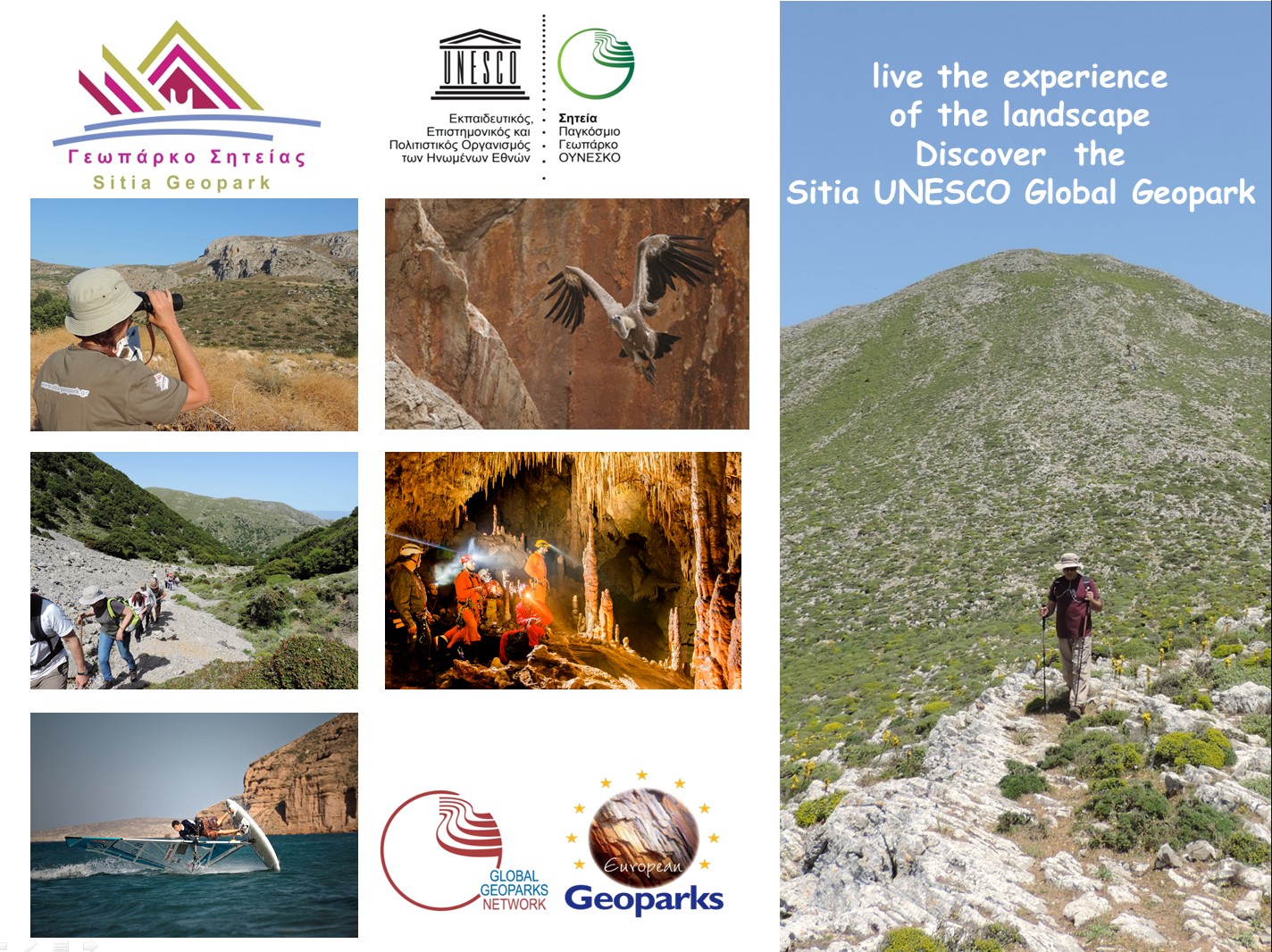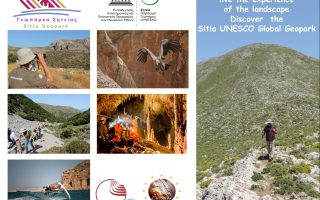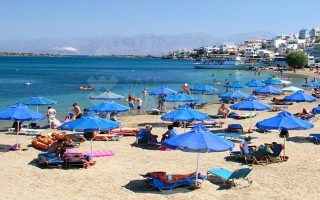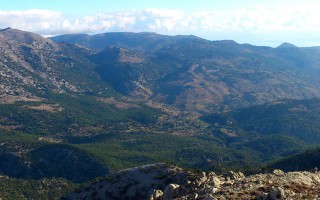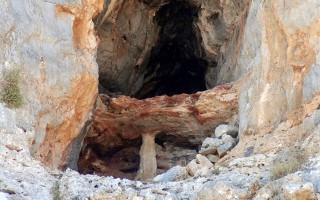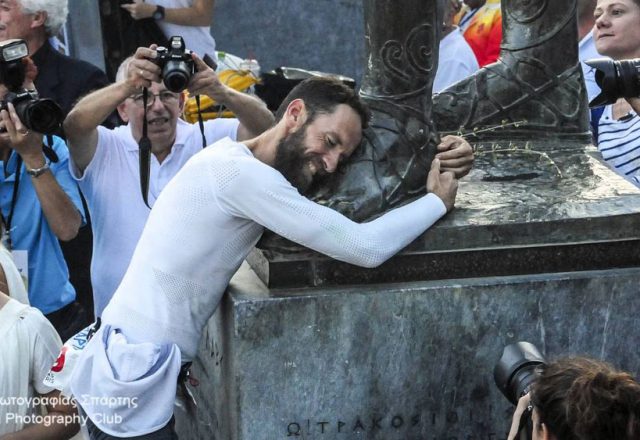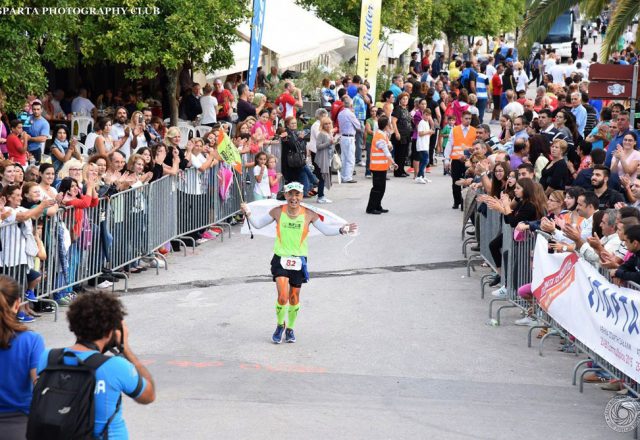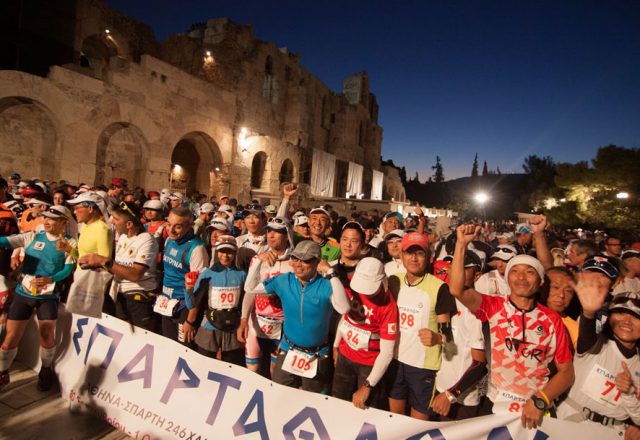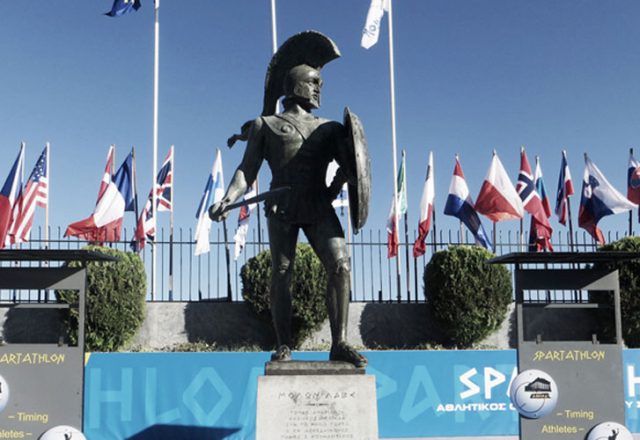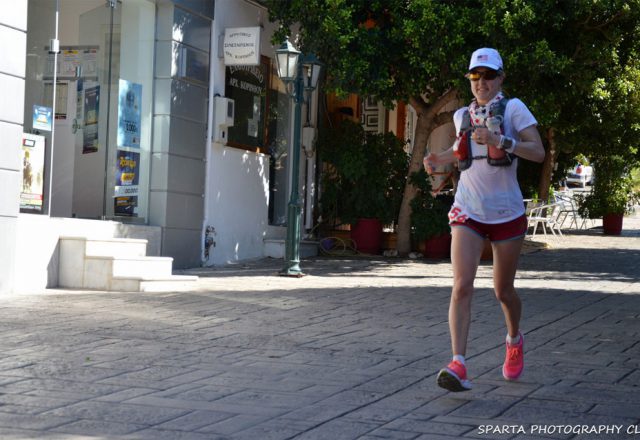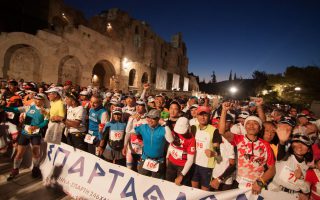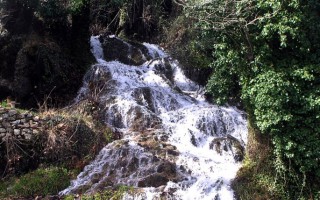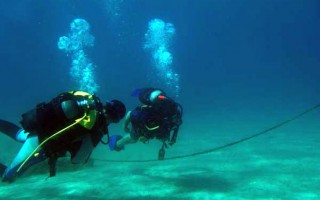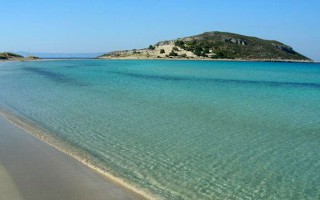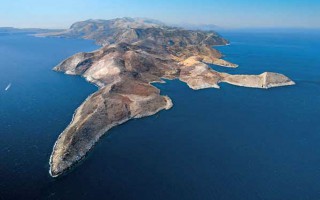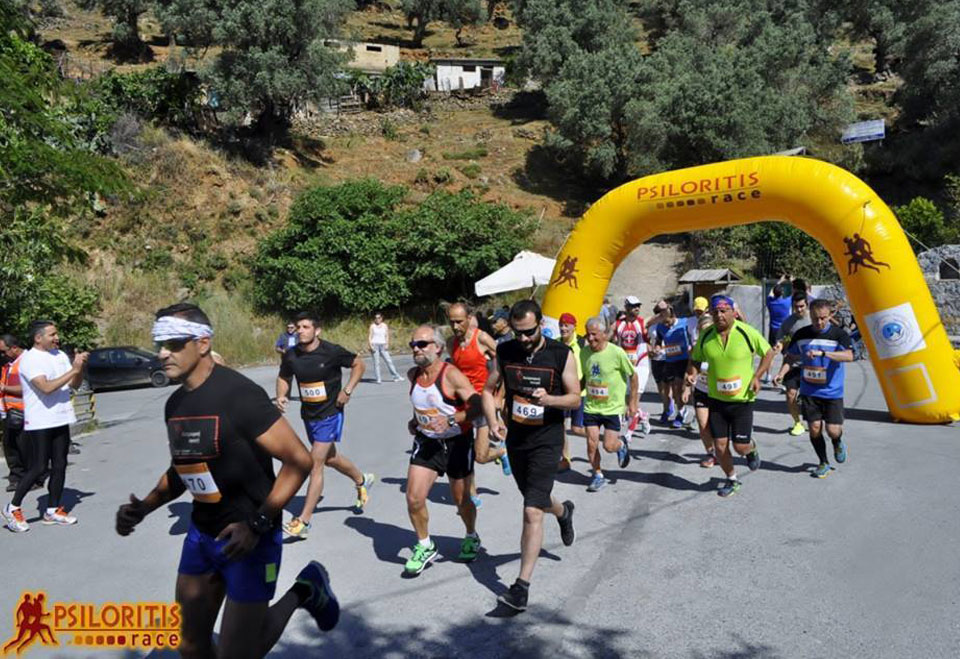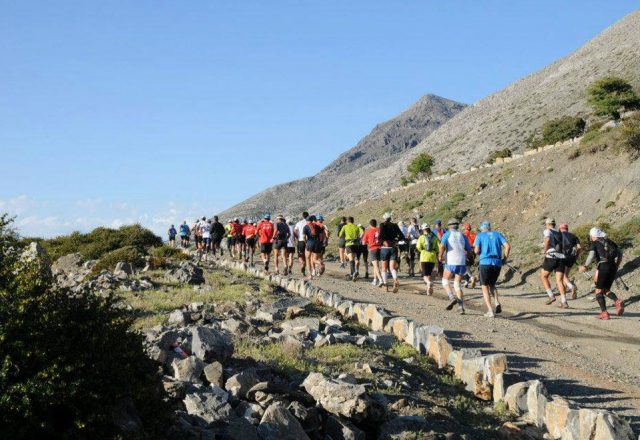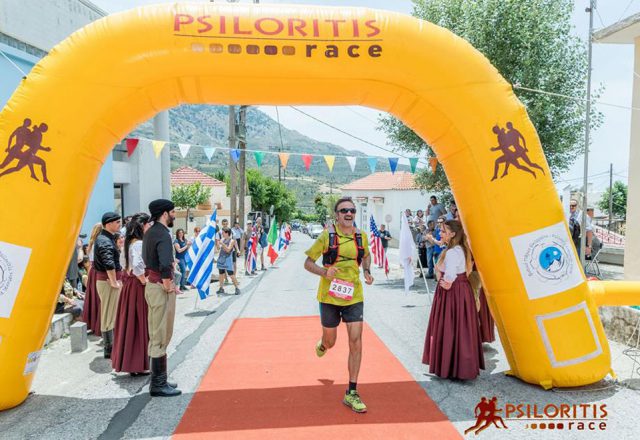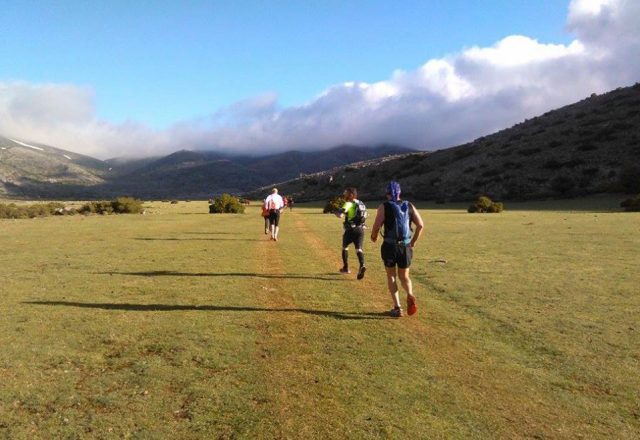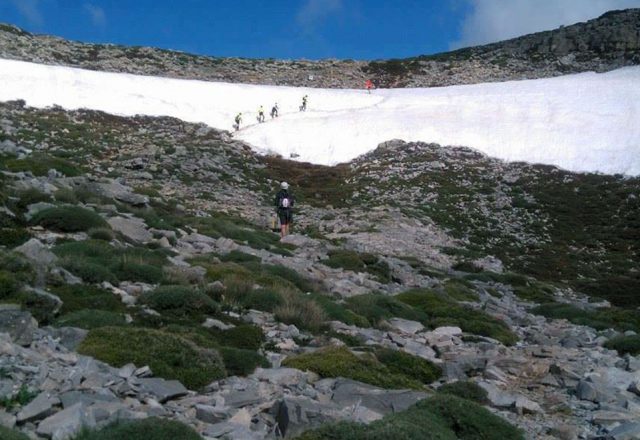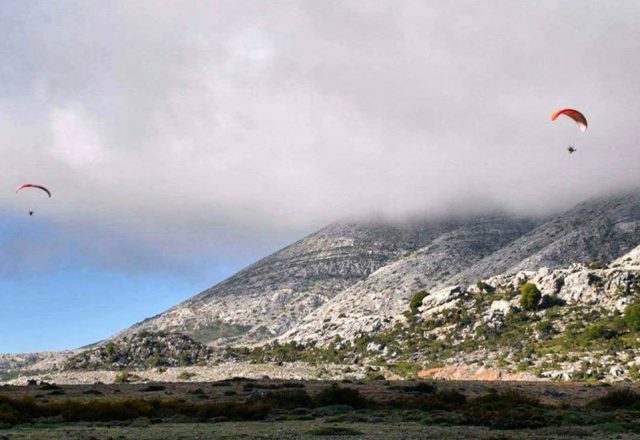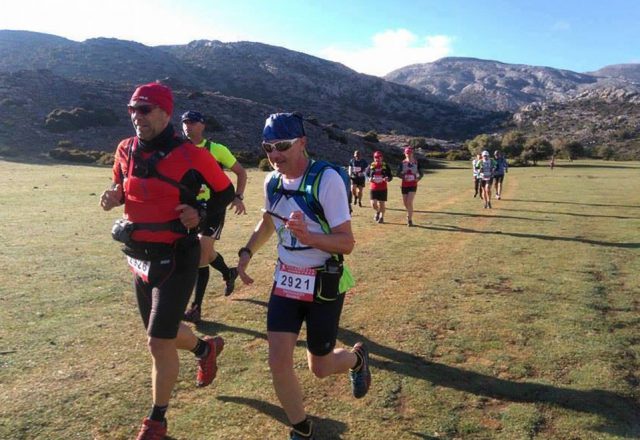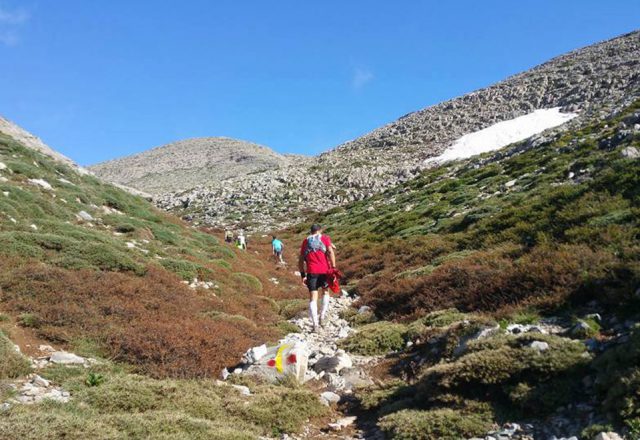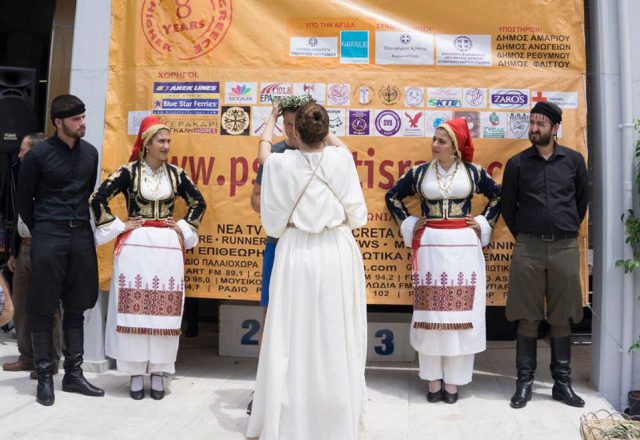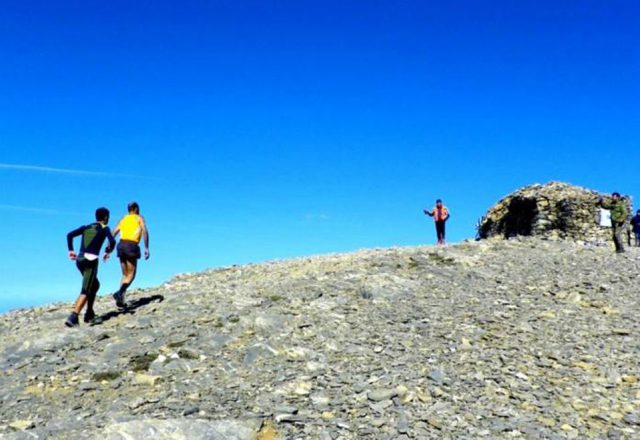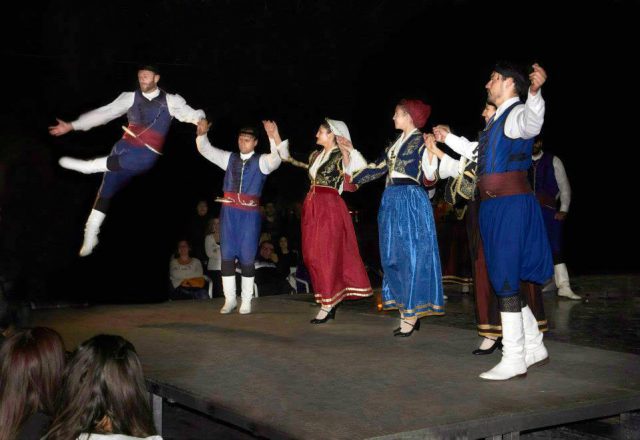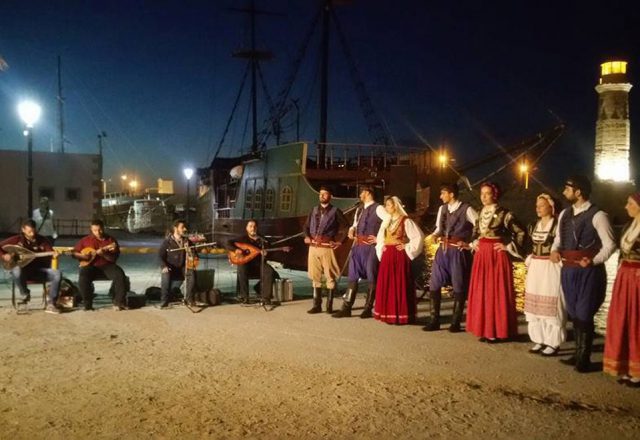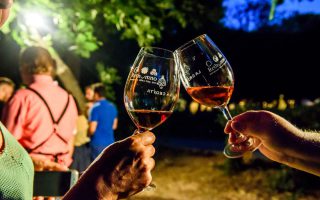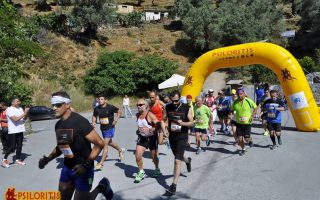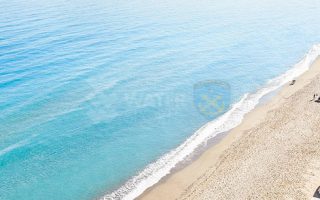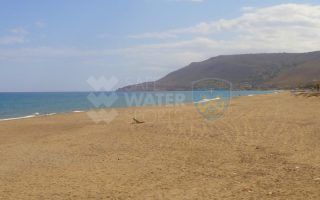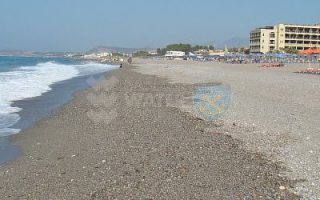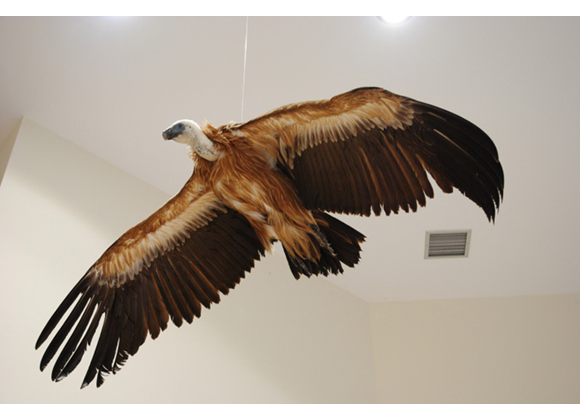When the Sitia region became a member of the UNESCO Geopark family, we had no idea just how much positive change this would bring!
This new aspect of tourism “Sitia Geopark”, is proving to be a considerable point of interest, especially in the alternative tourism market. The natural environment is no longer an obstacle for tourism development, on the contrary it is a great attraction for visitors.
We are seeing increasing interest in our Geopark from our customers, both individuals and tour operators from all over Europe. Sitia Geopark recently took part in online exhibitions’ of alternative tourism with Belgium, Poland, UK, Germany and France. We spoke with tour operators, journalists and travel writers. This type of tourism was something new to many of them and we detected great interest.
This is because our new venture is different and better than anything previously on offer!
Before our area was designated as a Geopark, the tourism product sold by the area of Sitia was Crete’, as promoted by all the island – Chania, Rethymno, Heraklion etc. Impossible competition!
“Sitia Geopark” is a totally new autonomous venture, found only in our area, fully compatible with alternative forms of tourism. It seems therefore that our region is slowly beginning to take a leading role, by fulfilling the needs of the modern tourist. The classic product of mass tourism and the trio of sun, sea and antiquities has completed its life cycle in these changing times and is naturally evolving into special and selective, ie alternative forms of tourism.
But what is “alternative tourism”?
And I quote the most appropriate description I can find: “Alternative tourism is the form of tourism, which is compatible with the social and environmental values of the region allowing both the local society and visitors to enjoy positive, worthwhile interaction and shared experiences. In other words, “alternative tourism” is the development that meets the needs both of the visitors and the region.
Three forms of alternative tourism have been developed and sold as package holidays to offices abroad in the last 12 years within the “Sitia Geopark” area.
The 1st alternative form of tourism is “walking tourism”. Over 25 marked routes are available with packages including accommodation, transportation, and guided tours for individual visitors as well as small groups of 6-15 people.
The 2nd form of alternative tourism – the largest alternative programme in our area for the last 18 years – is the sport of Windsurfing, which takes place on the beach of Kouremenos, Palekastro. The package includes accommodation in Palekastro area, transport and equipment (boat, sails) supplied by the 2 windsurfing stations located on the beach.
The 3rd form of alternative tourism is “cycling tourism”. Over 7 marked cycling routes are available within the Geopark area. The packages include accommodation in the area, transport and supply of city or mountain bike for individual customers or small groups of 6-15 people.
We are expecting a 4th very promising form of alternative tourism, “diving tourism”, to be added to our area with the creation of a diving park in the near future.
If asked today what the future tourism model for an area would be, I would say, 30% mass tourism and 70% alternative forms of tourism. The areas where mass tourism has prevailed show us that the above ratio is very difficult to achieve. To this end, we should consider the actual capacity of the area and we certainly need the support of government and the municipality.
Why choose 30% mass tourism? Mass tourism obviously controls the airlines and handles millions of people. Even though it creates many negatives in the host areas (for example Malia, Hersonissos, Faliraki, Rhodes, etc.), it also has 2 positives that we need in our area:
1) Direct flights from abroad to Sitia International Airport, offering easy and quick access to the destination and reduced package costs for customers.
2) New job opportunities in hotels/tourism for young people.
And why 70% alternative forms of tourism?
1) As far as revenue is concerned, one customer of alternative tourism equals
10 mass tourism customers.
2) It is more resistant to crises and pandemics. For example, regardless of the
Covid-19 pandemic, generally speaking small hotels, villas and apartments
in areas less developed developed continued to operate at a much lower
loss, whereas many large hotels and resorts remained closed in 2020 and
may well not open in 2021.
3) Not easily blackmailed by big tour operators.
4) Eco-friendly and local population-friendly as opposed to mass tourism.
5) The relationship between humans and the natural environment is restored.
6) Sustainable tourism development is created, by answering both the needs
of visitors and host areas, while protecting and increasing future
opportunities.
7) The local community profits the most as opposed to 2-3 people in the case
of mass tourism.
8) Repeat customers are created.
9) It attracts those in the high-end market with high standards, who would
never consider mass tourism.
This is dedicated to our future generations!
In no way do we want our actions of today to limit the ability of future generations to fulfill their own needs!
Kind regards
George Belibasakis
Web: https://www.sitia-geopark.gr/
TourMap: https://tours.nhmc.uoc.gr/geo/sitia/
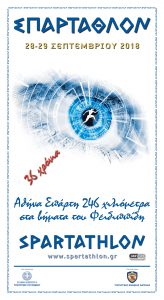 SPARTATHLON is a historic ultra-distance foot race that takes place in September of every year in Greece. It is one of the most difficult and satisfying ultra-distance races in the world because of its unique history and background.
SPARTATHLON is a historic ultra-distance foot race that takes place in September of every year in Greece. It is one of the most difficult and satisfying ultra-distance races in the world because of its unique history and background.
The Spartathlon revives the footsteps of Pheidippides, an ancient Athenian long distance runner, who in 490 BC, before the battle of Marathon, was sent to Sparta to seek help in the war between the Greeks and the Persians. According to the ancient Greek historian Herodotus, Pheidippides arrived in Sparta the day after his departure from Athens.
From 1984 the International Association “Spartathlon” was founded, which since then has continuously organized the race each September. The choice of this month is because that is the time reported by Herodotus for Pheidippides’ run to Sparta
1983 – Today
The battle of Marathon in 490 B.C. , one of the most famous battles in world history, constituted a landmark and a starting point in the history of civilization. The triumph of the genius of Miltiades and the self-denial of his soldiers made the hordes of Persians flee and rescued Athens and Hellenism from the utmost danger of subjugation to the barbarian invaders. The effects of the victory at Marathon continue to influence the present. It was the first victory against the planned domination of “Asianization” over Europe and an event with momentous significance. Because of this victory, Athens was able to achieve a great deal and bequeath the benefits of its knowledge, arts and virtue to mankind. Two and a half thousand years after that historical battle, a sports event, inseparably related to it, was born in Greece.
It’s Name was Spartathlon
It all started from Herodotus’ account of the Battle of Marathon. The great historian of antiquity described the details of the battle many years later and mentioned the deeds of Pheidippides, an Athenian messenger, sent by his generals to Sparta in order to secure help for the reinforcement of the scanty Athenian forces against the forthcoming Asiatic incursion. According to Herodotus, Pheidippides arrived in Sparta on the next day of his departure” from Athens.
An Epic Deed
Spartathlon is the event that brings this deed to attention today by drawing a legend out of the depths of history. The idea for its creation is belongs to John Foden, a British RAF Wing Commander. As a lover of Greece and student of ancient Greek history, Foden stopped his reading of Herodotus’ narration regarding Pheidippides, puzzled and wondering if a modern man could cover the distance from Athens to Sparta, i.e. 250 kms, within 36 hours. He thought that the only way to find out was to try to run the historical course since he himself was a long-distance runner. Thus, he and four other colleagues from the RAF came to Athens in the autumn of 1982 and planned the run as closely as possible to Herodotus’ description. On 8th October they started their adventure to see whether their speculations could be verified. On 9th October, the next day, John Foden arrived in Sparta in front of the statue of Leonidas having run for 36 hours. His colleague, John Scholten, had arrived half an hour earlier and finally, John McCarthy got to the finish line in less than 40 hours.
The British team proved Herodotus was right! A man is really able to cover 250 km in two days.
When John Foden and his colleagues first arrived in Athens, they were warmly welcomed and supported by members of the British community and Greek friends. After the success of the first attempt, the pioneer of this event began to envision the establishment of a foot race that would bring long distance runners from all over the world to Greece for a race following in the tracks of the ancient runner. The results are now widely known. Undoubtedly the historical context of the race, closely connected to the Olympic idea and consequently with compete unselfishness, appealed to the imagination and caused unprecedented excitement amongst a great number of long distance runners throughout the world. Their response was, justifiably, immediate and catalytic. The 1st International Spartathlon was organized in 1983 with the participation of 45 runners from 11 countries as well as Greece.
The success and participation were decisive for the future and the development of the race. Thus, in 1984, the “International Spartathlon Association” (I.S.A.) was created. Since then, the I.S.A. has organized the race every September as, according to Herodotus’ account, Pheidippides’ mission to Sparta was made at that time of the year. The revival of a page of ancient Greek history is established now as one of the most famous sporting events worldwide. Great runners come to Athens from Australia and Japan, Canada and the USA, including, of course, most European countries. All of them are attracted to the uniqueness and difficulty of the race as well as the modesty and respect of the athletic ideals imposed by a race known as “mythic”
In addition, beyond its athletic aspect, Spartathlon has become a powerful tribute from which real messages of friendship and peace can be sent to the peoples of the earth without political or racial discrimination. A tribute where Greece is also promoted crowned by its unparalleled hospitality and natural beauties. Thus hundreds of runners who have participated in Spartathlon carry home their images and experiences from Greece, and are our best ambassadors abroad.
About the Race
Described as the world’s most grueling race, the Spartathlon runs over rough tracks and muddy paths (often it rains during the race), crosses vineyards and olive groves, climbs steep hillsides and, most challenging of all, takes the runners on the 1,200 meter ascent and descent of Mount Parthenio in the dead of night. This is the mountain, covered with rocks and bushes, on which it is said Pheidippides met the god Pan. In 2,500 years man has had no impact at all. There is still no pathway over the mountain that is swept by strong winds with temperatures as low as 4°C. The ascent is marked out by a trail of battery-driven colored flashing lights and its challenge is a trial for human stamina and mental strength. Over the mountain the last sections are no less energy sapping and exhausting for the runners as they follow a road that winds up and down hills before descending into Sparta. Even the finest athletes start hallucinating as they cover these final stages.
Having lost all sense of time and reality, they are “on automatic” as they push their weary bodies on towards the finishing line at the statue of Leonidas. At most, only about a third of the runners who leave Athens end the course in Sparta. The goal of all participants is to cover the course within the 36-hour time limit. Setting records is the primary aim. Those who succeed in reaching Sparta have trouble finding words to describe their feelings. Spartathlon has to be lived through. It is a very personal experience in which the athletes dream about participating. Their imagination is stirred by the idea of being a modern Pheidippides, running in the footsteps of the ancient messenger. They train for years to get fit enough both physically and mentally to meet the race’s demands.
Source: www.spartathlon.gr
 The race trail covers the distance that pilgrims of the sacred city of Minoan Knossos used to walk in order to climb Psiloritis mountain and honor their god, Zeus Cretagenes, who according to Ancient Greek Mythology was brought up in the cave of Ideon Andron, worship center and sanctum during the Minoan and Roman times. Today, Psiloritis Race links the myth with contemporary history as the runners will follow the traces of their ancestors on the holy mountain of Zeus Cretagenes.
The race trail covers the distance that pilgrims of the sacred city of Minoan Knossos used to walk in order to climb Psiloritis mountain and honor their god, Zeus Cretagenes, who according to Ancient Greek Mythology was brought up in the cave of Ideon Andron, worship center and sanctum during the Minoan and Roman times. Today, Psiloritis Race links the myth with contemporary history as the runners will follow the traces of their ancestors on the holy mountain of Zeus Cretagenes.
The race will start on the morning of May, 28 on Nida plateau in Anogia Crete. The athletes of 35 km will reach the summit of Psiloritis (2.456).
The idea of a mountain race in Crete, with high international standards, was first born in June 2008 on Mt Olympus. Our love for the mountain Psiloritis where Zeus brought up, the promotion of the natural beauty of the area finally transformed the idea into practice .Having the support of the people who love the island and enjoy running on the mountains, we organize this event which is called the “Psiloritis Race” (PR). The event is organized with the kind support of the prefecture of Rethymno.
 The International Mountain Race “Psiloritis Race” is an athletic meeting that forwards physical activity in touch with the natural environment. The race offers the opportunity to experience the unique and exciting character of the mountain along with the opportunity for the participants to experience a unique vigorous seven-hour race. That is the reason why the athletes who will try out their strength in the PR should practice the philosophy of semi autonomy, carrying a least a necessary equipment that will provide them with security and sustenance during the race ; while there will be a systematical and in regular intervals supply.
The International Mountain Race “Psiloritis Race” is an athletic meeting that forwards physical activity in touch with the natural environment. The race offers the opportunity to experience the unique and exciting character of the mountain along with the opportunity for the participants to experience a unique vigorous seven-hour race. That is the reason why the athletes who will try out their strength in the PR should practice the philosophy of semi autonomy, carrying a least a necessary equipment that will provide them with security and sustenance during the race ; while there will be a systematical and in regular intervals supply.
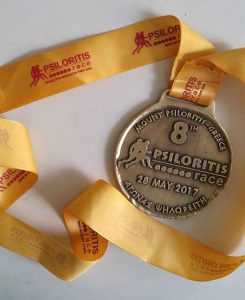 We created the PR site that will provide all the information for the race, as well as on the FaceBook, which is welcomed in ten days time by 9000 friends around the world. The webpage of the reace has more than 235,000 visitors by now. For this well-organized and innovative event the response has far exceeded all the expectations of the organizing committee which aims to attract more and more athletes every year.
We created the PR site that will provide all the information for the race, as well as on the FaceBook, which is welcomed in ten days time by 9000 friends around the world. The webpage of the reace has more than 235,000 visitors by now. For this well-organized and innovative event the response has far exceeded all the expectations of the organizing committee which aims to attract more and more athletes every year.
Facebook
www.facebook.com/psiloritisrace.trialrace
www.facebook.com/Psiloritis-Race-469064896441986
www.facebook.com/psiloritis.racerethymno
With your participation either as athletes or as volunteers or spectators along with your comments and feedback will help us achieve the best possible result. We invite everyone to join the Race in any way they choose.
Source: www.psiloritisrace.com
The AMAZONAS PARK, a public park for birds in the midst of the mountains is a very special park. In the course of time this park has developed into homes for parrots which have been handed in for various reasons by their former owners. Man considers the advantages that he has by keeping a parrot as a pet: he wants to have a partner he can talk to and caress whenever he feels like it.
A parrot is able to convey to man the feeling of mutual understanding because of its intelligence, docility, bond with man and ability to speak. Thus a special, quite personal relationship between man and animal develops in which the animal wholly complies with the needs of the human being whereas man hardly ever fulfils the needs a bird has because these are almost completely unknown to him.
Website: www.amazonaspark.gr
Source: www.incrediblecrete.gr
The history of this land has been flowing for thousands of years alongside the history of its people. And although the time of humans usually leaves gaps and unexplored points, the time of the land in Sitia has recorded its marks in every nook and cranny: on the rocks, in the ravines, in the caves and in its unique gorges.
Website: www.sitia-geopark.gr
Source: www.incrediblecrete.gr
The philosophy of the creators of “Lasinthos” is no other than the revival of our tradition and culture, the manners and customs of our region, the preservation and the elevation of the rare flora and fauna of the Cretan nature, the promotion of the Cretan cuisine as well as the way of making and producing the various Cretan traditional products. “Lasinthos” is prevailed by the Cretan traditional architecture and the natural beauty of the traditional materials (stone, carved marble, tile and wood). In the Park’s 200 acres, we cultivate fruit-bearing trees, garden produce, vineyards, herbs and sweet-smelling plants that fit to the climatic conditions of the region.
Website: lasinthos
Source: www.incrediblecrete.gr

